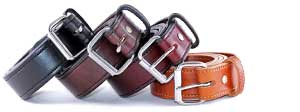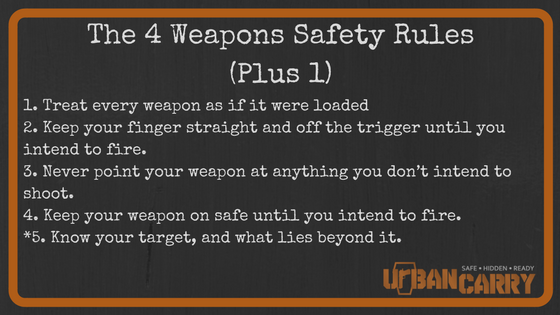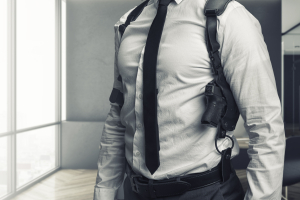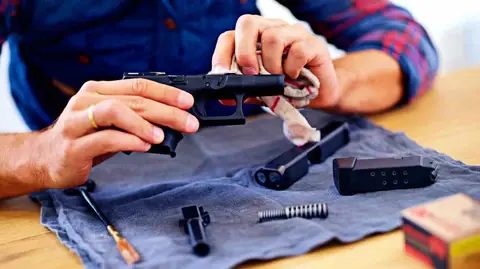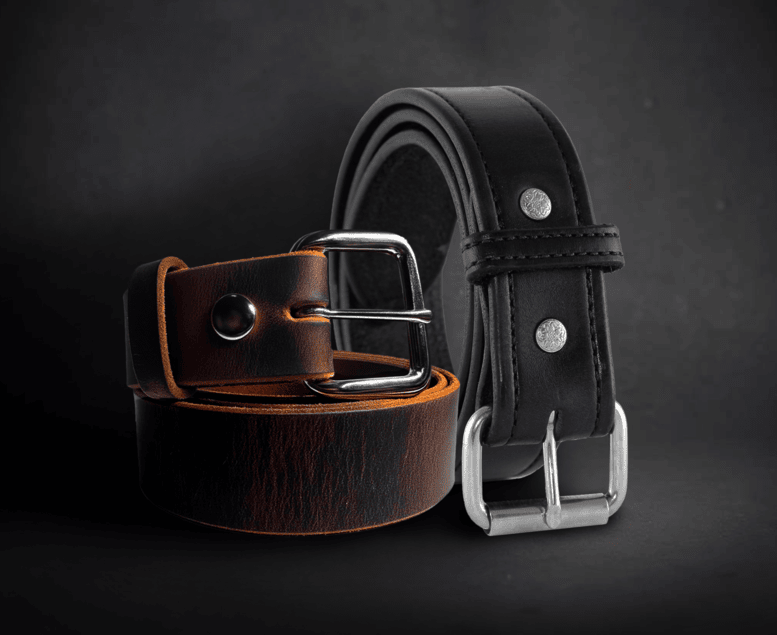Kids & Gun Safety: A Roadmap
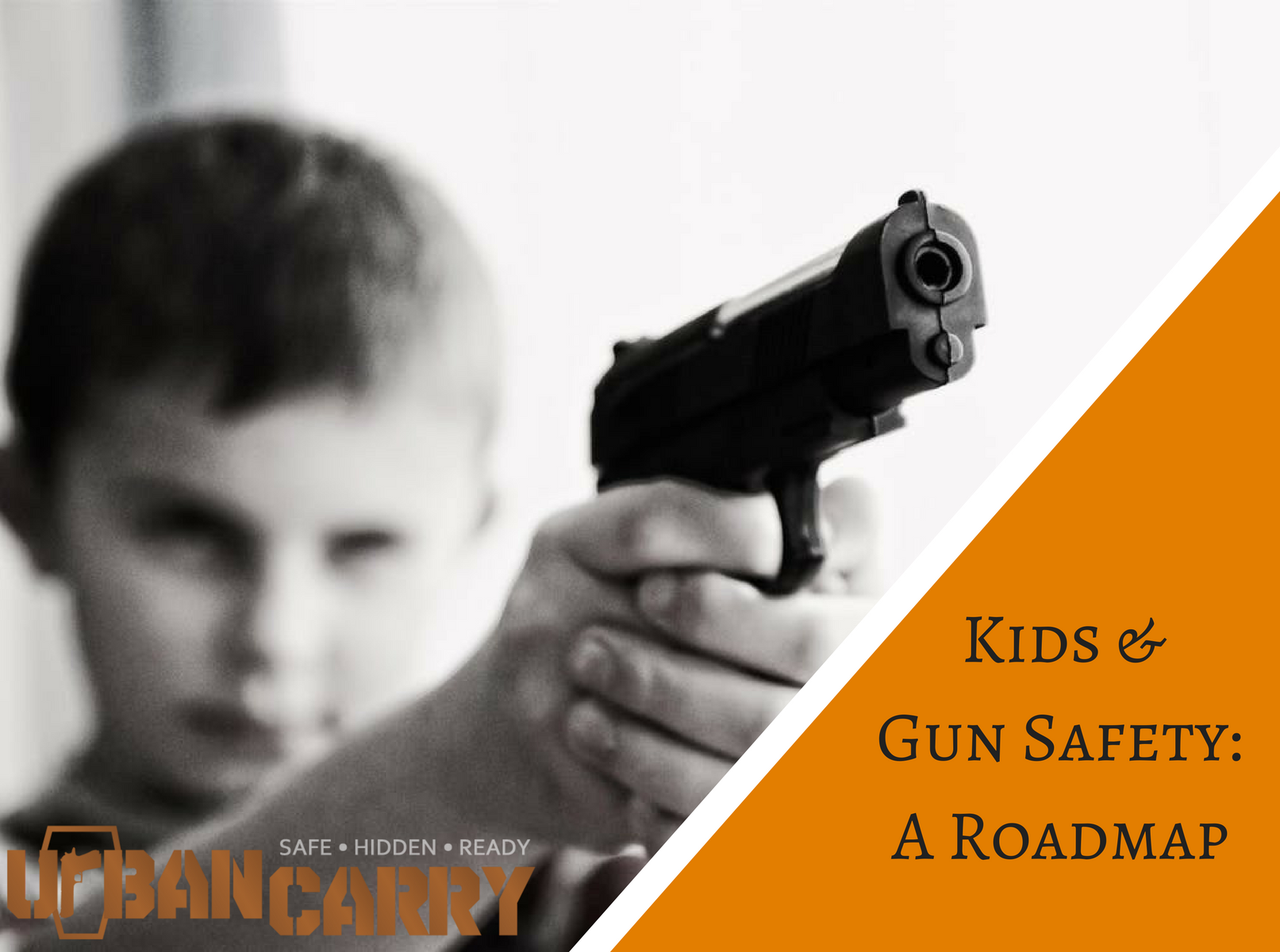
The Next Generation: Teaching our kids firearms safety, skills and responsibility
While there are many perspectives on the right time and methods to teach children about firearms safety and skills, we can all agree that safety, skills and responsibility with guns is something every young person should know. As with anything, teaching should be approached in a crawl, walk, run method through the various stages of maturity.
Especially with boys, the mystique of guns needs to be removed, and exposure to firearms is the first step. If children grow up without understanding the lethality of what a gun does, they will develop an unrealistic view of firearms as a whole. In this article, we’re going to go through the different stages of firearms education, with a focus on reinforcing safety along the way.
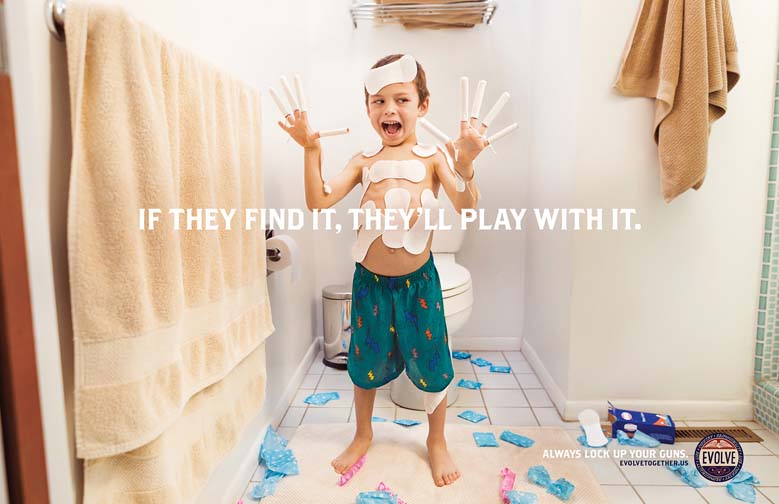
A humorous reminder of a frightening truth. Don't let them find your guns. - PC
Important note: Remember that while teaching firearms safety to our children is important, they’ll remember what you do far more than they remember what you say. If you don’t wear eye and ear pro every time you shoot, why would they? Actions always speak louder than words, and seeing their leaders (AKA you) handle firearms safely will reinforce those lessons.
Crawl
At a young age, it’s vital to begin developing habits that will be the foundation for future firearms skills. Treating any toy guns the same as a real gun will help build the good habits that will ensure safe shooting for a lifetime. The basic rules of firearms safety that every Marine recruit learns are a good place to start.
1. Treat every weapon as if it were loaded.
2. Never point your weapon at anything you do not intend to shoot.
3. Keep your finger straight and off the trigger until you are ready to fire.
4. Keep your weapon on safe until you are ready to fire.
There’s also a fifth basic safety rule that was removed from the rules list:
Rule No. 5: Know your target, and what lies beyond it.
Print this out & have your kids review it whenever they interact with firearms.
Of course, there are other safety rules that should be taught and adhered to, but these are the absolute basic rules that every firearms owner should know and practice. These rules can be implemented with toy guns, and one idea to reinforce the premise that guns are not toys is to lock up any toy guns in the safe with your guns.
Taking your children with you to the range or hunting with you is the best way to relay to them what guns are for. Seeing you bring down game, or as a demonstration of a firearms’ power, shooting a pumpkin with a 12 gauge, will break through any Disneyfied ideals a child may have regarding guns.
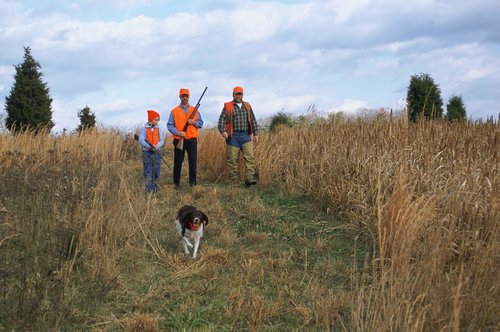
Family hunting & range trips create learning and bonding opportunities. - PC
These hunting trips and range visits give you more opportunities to demonstrate proper firearms handling and safety, such as clearing a weapon, storing and transporting weapons and cleaning firearms.
Cleaning firearms can turn into a family affair, enabling you to spend time with your children or grandchildren while teaching them about firearms. Providing instruction on how to properly clean firearms is another block in the foundation of their training. This is something they’ll need to know how to do should they choose to own firearms as an adult.
Pick up an Urban Carry Cleaning Mat here.
Ensure that you’re following good cleaning practices - remember that kids will follow what you do rather than what you say. Working in a well-ventilated area, using goggles and wearing gloves are things we should all be doing when cleaning our weapons, but it’s even more important for our children, as the lead residue and toxins from solvents can have a more damaging effect on them.
In addition to proper cleaning practices, weapons maintenance offers yet another opportunity to teach and review the basic safety rules. As many firearms accidents occur when cleaning, it’s imperative that children (and adults) not only clear their guns before cleaning, but also know their equipment well enough to disassemble and reassemble the firearm properly.
Walk
Like many young men, I was given a Red Ryder BB gun at 10 years old. Air rifles are a great way to start teaching weapons handling and range skills with a real gun. Each child is different in their rate of maturity, so it will be up to you as the parent or guardian to decide when to take this step.
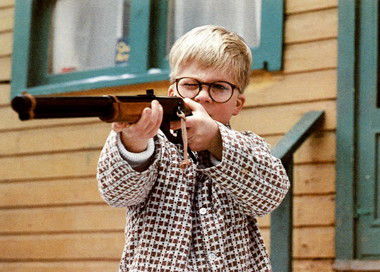
Don't shoot your eye out, Ralphie. - PC
This step up from toy guns increases the child's responsibility and experience base. This is a great time to teach them how to set up and tear down a target and range, and gives them a gun of their own to maintain. Simple cleaning with a brush and rag should suffice for an air rifle, although you can use bore swabs if you’d like to add that element.
Headed to the range? You're going to need a good range bag!
On top of cleaning their own firearms, they now have one to maintain security of. This is a good age to begin teaching children about firearms security, and our responsibilities as gun owners. Not only do children need to know how to properly handle guns themselves, they also need to know why it’s important to keep them out of the hands of less-experienced users or criminals.
While it’s difficult to teach the the finer points of marksmanship with a Red Ryder, simple techniques such as breath control and shooting positions can be taught. As with any other shooting session, this is a good time to reinforce those basic weapons safety rules, and add in some others, such as how to safely carry a firearm when walking and transporting firearms to and from the range.
Run
Moving up from the air rifle category into a small-caliber pistol or rifle, such as a .22, is a decision that should be based on how well a child has demonstrated range etiquette and basic shooting safety and technique with an air rifle, in addition to their overall maturity.

The Ruger 10/22 - a great beginning rifle. - PC
This is an important purchase, and a good .22 rifle is something that can last a young shooter their entire lives, something they can end up teaching shooting fundamentals to your grandchildren with. Of course, another alternative to the .22 is a 20 gauge shotgun, especially if small game hunting is something you want to do as a family.
At this level, responsibilities and training will advance again, with more attention given to shooting drills, such as dry firing. The child’s cleaning responsibilities will increase as well, as they now have an air rifle and small-caliber rifle or pistol to maintain.
As a child enters their teenage years, it may be time to move up to a larger caliber firearm, such as a 9mm handgun or larger rifle, such as the .223. Both are good options, as neither produce a great deal of recoil but allow for more advanced firearms techniques to be taught and practiced. At this point, it may be a good idea to enlist the help of a coach, especially if the young person has a desire to compete in shooting sports.
Make practicing drills fun with the Urban Carry Virtual Reality Headset & App!
Once your child has turned 18, they do have the legal right to own a rifle or shotgun, and at 21 they’ll be able to purchase handguns as well. When they move out, their future experiences with firearms will be based on what foundation you’ve helped them build over the years. However, if they are still living in your house, it’s up to you whether or not they have access to the gun safe.
Whether you have guns in your house or not, it’s important to take the mystery out of guns for kids. While you may have your guns properly secured, other people may not. Starting at a young age, education and exposure to guns will teach children that they are a serious responsibility, not a toy.
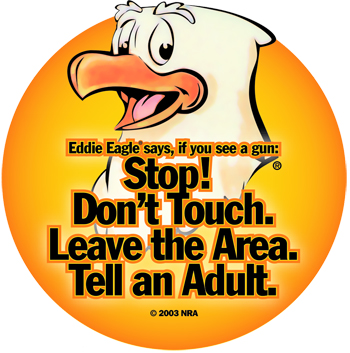
The NRA has a great safety program for kids called the "Eddie Eagle GunSafe Program."
Check it out here.
From there, the decision to increase their firearms knowledge and skill is up to you as the parent. Remember that your children will remember what you do more than anything, so you must take accountability for demonstrating safe firearms practices throughout their lifetime.
If you found this article useful, please pass it along to a friend. Remember, you can always find us on Facebook, Instagram and Twitter or join our email newsletter for more great content like this.

